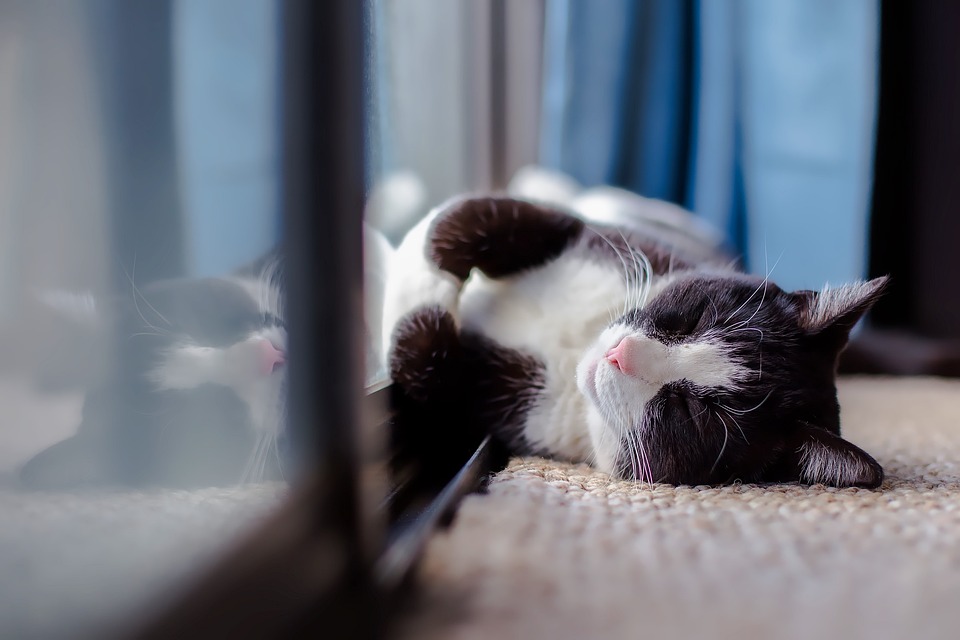
Cats are fascinating creatures, known for their independence and mysterious demeanor. To build a strong and loving bond with your feline companion, it’s essential to understand their communication methods. This guide will delve into the intricacies of cat communication, providing you with actionable tips and strategies to enhance cat behavior and training.
Understanding Cat Communication
Cats primarily use body language, vocalizations, and scent to communicate their needs, emotions, and intentions. By learning to interpret these signals, you can respond appropriately and create a nurturing environment for your pet.
Body Language
Cats use a variety of body language cues to express themselves. Here are some key indicators to look out for:
- Tail Position: A cat’s tail is a great indicator of its mood. A high, upright tail signifies confidence and happiness, while a low or tucked tail suggests fear or submission. A flicking or twitching tail can indicate irritation or excitement.
- Ear Position: Forward-facing ears indicate curiosity or contentment, while flattened ears suggest fear or aggression.
- Eye Contact: Slow blinking is a sign of trust and affection. Direct, unblinking stares can be perceived as a challenge or threat.
- Body Posture: An arched back with fur standing on end indicates a frightened or defensive cat. A relaxed body with a gentle sway suggests confidence and contentment.
Vocalizations
Cats use a variety of sounds to communicate different messages:
- Meowing: Cats meow primarily to communicate with humans. The tone and frequency can indicate their needs, such as hunger or attention.
- Purring: Often a sign of contentment, but can also be used for self-soothing when a cat is in pain or stressed.
- Hissing and Growling: These sounds indicate fear, aggression, or discomfort.
- Chirping or Trilling: Typically used as a greeting or to gain attention.
Scent Marking
Scent is a powerful tool for cat communication. Cats have scent glands on their cheeks, paws, and tail, which they use to mark their territory and express comfort. Common scent-marking behaviors include:
- Rubbing: Cats rub their faces against objects or people to deposit their scent and indicate ownership or affection.
- Scratching: Besides sharpening their claws, scratching leaves both visual and scent marks to establish territory.
- Spraying: A form of marking territory, especially among unneutered males. Addressing the underlying cause is crucial to managing this behavior.
Actionable Tips for Enhancing Cat Behavior and Training
Understanding cat communication is the first step toward effective training. Here are some strategies to enhance cat behavior and foster a harmonious relationship:
Positive Reinforcement
Reward-based training is highly effective for cats. Use treats, praise, or affection to reinforce desired behaviors. For example, reward your cat for using the scratching post instead of the furniture, or for coming when called.
Consistency is Key
Consistency in your responses and training techniques helps your cat understand expectations. Use the same commands and rewards each time to reinforce learning.
Environmental Enrichment
Cats are intelligent and curious animals that require mental and physical stimulation. Provide toys, climbing structures, and interactive play sessions to keep them engaged and reduce unwanted behaviors.
Respect Their Space
Cats value their independence and personal space. Ensure they have quiet areas to retreat to when needed. Avoid forcing interactions and let them approach you on their own terms.
Litter Box Management
A clean and accessible litter box is crucial for good behavior. Scoop daily and change litter regularly. If your cat avoids the litter box, consider changing the type of litter or the location of the box.
Understanding and Managing Stress
Changes in the environment or routine can stress cats. Identify stressors and provide comfort through familiar scents and routines. Consider pheromone diffusers to create a calming atmosphere.
Common Behavioral Issues and Solutions
Scratching Furniture
Provide appropriate scratching posts and encourage their use by positioning them near preferred scratching areas. Use double-sided tape or deterrent sprays on furniture to discourage scratching.
Inappropriate Elimination
Rule out medical issues with a vet visit. Ensure the litter box is clean and accessible. Experiment with different types of litter or box locations to find what your cat prefers.
Aggression Towards People or Other Pets
Identify triggers and avoid situations that lead to aggression. Gradual introductions and supervised interactions with other pets can help build tolerance. Consult a behaviorist for persistent issues.
Excessive Meowing
Determine the cause of excessive vocalization, such as hunger, boredom, or medical issues. Provide attention and enrichment to alleviate boredom, and establish a feeding routine to address hunger-related meowing.
Conclusion
Understanding feline communication is the key to raising a well-behaved and contented cat. By interpreting their body language, vocalizations, and scent-marking behaviors, you can respond effectively to your cat’s needs and foster a harmonious relationship. Through consistent training, environmental enrichment, and attention to their well-being, you can enjoy a loving and rewarding companionship with your feline friend.
#ChatGPT assisted in the creation of this article.







